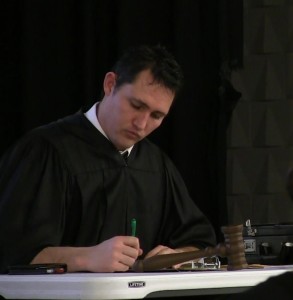Debate

We call it an argument for a reason. There are two opposing sides who want to be heard. You will be organized into a group of 2 people who will debate with an opposing group. You will need to work with your partner to gather as much information as you can to argue your point in the kindest and most professional way possible.
A coin toss before the debate will decide which group goes first, speaker positions will be decided before the debate and turned in with the debate summary.
The debate will be set up as follows:
One Minute Opening Statement:
Spoken to the Jury setting of your argument.
Four-minute opening argument and prepared argument by Group 1.
Four-minute opening argument and prepared argument by Group 2.
Five-minutes Cross Fire questioning period between G1 and G2 – Group 2 will ask the first question.
Four-minute rebuttal from Group 2 Speaker B.
Four-minute rebuttal from Group 1 Speaker B.
Five- minutes Cross Fire questioning period between G1 and G2. Group 1 will ask the first question.
Two-minute “last shot” final words by each group. -Group 2 will start
Paperwork / Visual Aid
Items to hand in to Brother Haacke:
- Sources: For everything you use, including photos, videos, and any statistics
- Note Cards: Include any debate-day notes
- Outline of Argument: You will turn in a final draft of your argument. Go into detail of each section of the debate, including opening argument, counter arguments, and closing argument. Include everything you will say or show.
- Visual Aid: Visual aids are not required in your debate but could be very helpful. This does not have to be a PowerPoint. But it should enhance and not distract from that argument.
- Group Summary: Turn in a short and brief summary of what exactly you’ll be debating for the bailiff (TA) to read before you begin your debate. Your summary is due before the debates start.
TIPS:
- Your argument should be pretty solid, but be ready to adapt and change based on what your opponents say on the day of the debate.
- Your closing argument is essential. This is your last chance to restate your main ideas and convince the jury that you are right. You should not bring up any new material in at this point, but rather solidify your stance.
- You opponent is not the target audience. You want to prepare for what they may bring up, but you are speaking to the jury.
- The jury will vote on which team had the best argument and which had the best presentation. It is your goal to win both categories. Winners will be paid accordingly.
Payment breakdown.
- Debate itself – 1,400
- This includes 100 for Argument and 100 for Presentation.
- Paperwork – 200
- PPC Visit – 200
- Individual grade by group/partner – 200
